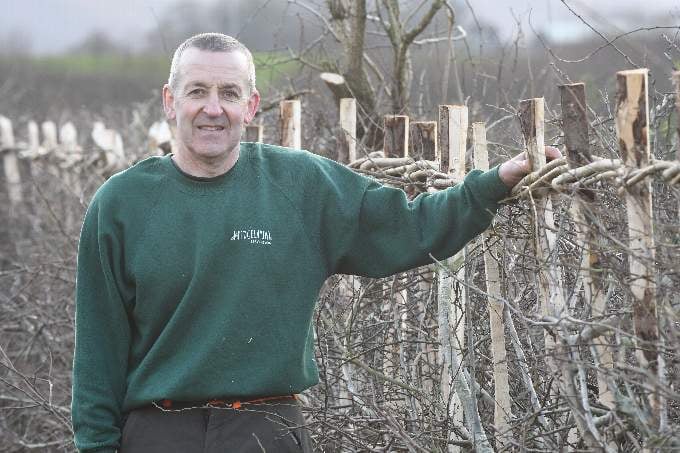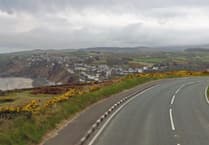The island’s traditional pattern of smaller fields and the need for shelter for livestock from strong winds has meant that we are comparatively well off for hedgerows - we have around 5,000 kilometres of them.
And that’s a good thing, not least because they are vitally important for our wildlife: they provide a home for nesting birds, food from the berries that grow on them and corridors along which they can move through the landscape.
However, like everything else, hedgerows need to be looked after and maintained to keep them healthy.
And, according to hedge layer Phil Pullen that is an area where we could be doing better.
He says: ’The island is a beautiful place and there’s lots of hedgerows but no one really takes care of them. They could be a lot better than they are.’
Hedgelaying is a country craft which has been practised for hundreds of years. In effect, it takes the hedge back to basics, thus encouraging new growth and a new life cycle for the hedge.
The National Hedgelaying Society (NHLS) in the UK is a charity dedicated to maintaining the traditional skills of hedgelaying and encouraging the sympathetic management of hedgerows for wildlife and the landscape. The Prince of Wales, a renowned lover of the countryside, is its patron.
Phil was bitten by the hedgelaying bug several years ago when he went with a friend to watch the NHLS’s National Championship and decided this was something he would enjoy doing.
After rolling his sleeves up and trying it out for himself with Wirral Wildlife Volunteers, Phil went down to Buckinghamshire to train with a hedge layer there called Dean Dyer.
His return to the island in 2020 coincided with the launch of Agri Environment Scheme (AES) which encourages farmers to carry out environmental initiatives.
’David Bellamy (from AES delivery partner the Manx Wildlife Trust) was quite keen for some hedges to be laid and restored because he’s of the same opinion as me that a lot of the hedges here could be treated better, and made a lot better for the wildlife, so I’ve got quite a few jobs from that this year,’ says Phil.
He is currently working on a job in Andreas, which is where all the pictures on this page were taken. He says the length of time a job will take depends on what the hedge is like: ’If you’ve got a good clean hedge, with not a lot of bramble in it that you’ve got to clear out, or a lot of overgrowth, you can do maybe 20 to 25 yards a day but if it’s full of brambles and needs a lot of clearing out you could be down to about 10 yards.’
And, when it comes to the gorse hedges that are also common on the island, Phil said: ’Gorse I can’t do much with. It’s not something that you can lay and make a nice hedge out of.
’Pretty much the only way you can deal with gorse if you want it to be a good hedge is to cut hard every year and keep it trimmed hard and it makes quite a nice solid hedge whereas, if you leave it, it just grows long and big and it falls down and it’s a real mess.’
Which means there is just time to get it done before the hedge trimming season ends at the end of next month.





Comments
This article has no comments yet. Be the first to leave a comment.